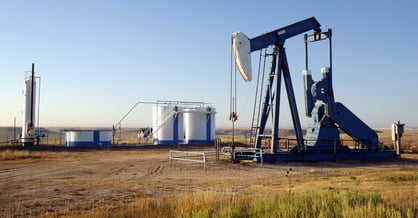Carbon Dioxide (CO2) Gas Detectors
Carbon dioxide (CO2) is odorless and colorless, meaning that workers can easily be overcome by high levels of carbon dioxide in confined spaces. Carbon dioxide emissions pose a potentially deadly threat and are most commonly associated with construction, breweries, agriculture, machine shops, and biofuel production.
.webp?width=600&height=400&name=landfill%20(1).webp)
Characteristics of Carbon Dioxide (CO2)
Despite the fact that we breathe out carbon dioxide and that it is present in the atmosphere (about 400 ppm), its maximum safe level is 5000 ppm (0.5% by volume). It is a product of complete combustion and is dangerous it is heavier than air and collects at low levels. There is some degree of risk in crowded, badly ventilated places, and an oxygen deficient atmosphere often accompanies this problem. Carbon dioxide odorless, colorless and difficult to measure in ppm levels, making infrared absorption the usual technique.
Source: Dangerous Properties of Industrial Materials (Sixth Edition) by N. Irving Sax
More about Carbon Dioxide


CARBON DIOXIDE - CO2
Effects of Various CO2 Levels
Frequently Asked Questions
What is Carbon dioxide (CO2)?
Carbon dioxide (CO2) is a colorless, odorless gas naturally present in the Earth's atmosphere. It is produced by respiration, combustion of fossil fuels, and various industrial processes. CO2 is a key greenhouse gas contributing to global warming.
How can carbon dioxide (CO2) be detected?
Carbon dioxide (CO2) is difficult to measure in ppm levels but can be detected using infrared (IR) sensors, electrochemical sensors, and chemical absorption methods. These technologies measure CO2 concentrations in the air, ensuring safety in industrial, commercial, and residential environments.
What Are the Health Effects of CO2 Exposure?
High levels of Carbon dioxide (CO2) exposure can cause headaches, dizziness, shortness of breath, and, in extreme cases, loss of consciousness and death. Prolonged exposure to elevated CO2 levels can also impair cognitive function and overall well-being.
What types of CO2 detectors does Industrial Scientific offer?
Industrial Scientific offers a range of CO2 detectors, including portable gas detectors and gas monitoring software systems. These devices provide accurate, real-time CO2 measurements, alarms, and data logging to ensure safety and regulatory compliance in various settings.


